Piolets d'Or Announces the "Significant Ascents" of 2023
This list of 68 climbs is effectively a "long list" used to select nominees of the prestigious alpine award.
Between waiting her turn for the rescue chopper and summiting in silence one year later, Andrea Sherpa-Zimmermann relies on her husband, a native Sherpa, as her guide on Everest.

It is 3:45 in the morning, May 21, 2016: a date that will remain in my mind forever.
I am standing on the "top of the world" at 8,848 meters (29,028 ft) with my husband, Norbu Sherpa. We are alone in the full moon: Norbu, me and the Goddess Chomolungma. The stars are lighting up a pure sky. The atmosphere is simply magical. One-and-a-half hours in the silence of the mountain on the top of Mount Everest.
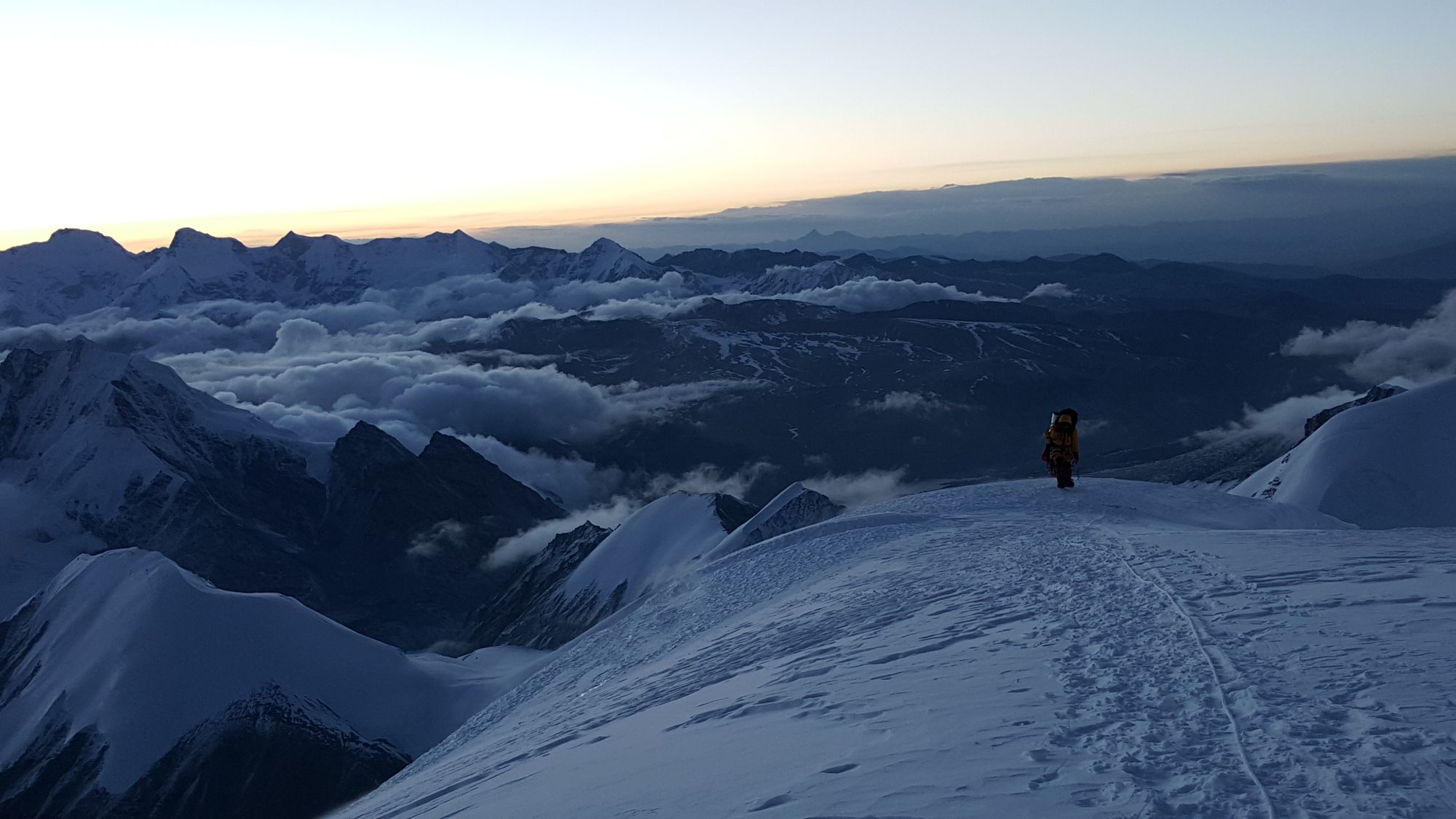
A stunning sunrise brings us back to reality. Some climbers have started to arrive. We begin our descent with calm and serenity. Each step is controlled and assured. We are in full command of our emotions and abilities. A single step off the path would mean a no-return plummet down a vertical of several thousand meters. Twenty-three hours after our start at 8,300 meters (the last Camp) via the summit, we are back at the Advance Base Camp on the Northside with our heavy loads. A dream had come true.

This personal project – summiting Everest – was supposed to have happened one year earlier. But in 2015, on our way to Everest Base Camp in Tibet, we found ourselves suddenly in a disastrous shadow. Like in a movie, people were screaming, crying, running in all directions. Huge rocks were falling from everywhere and the earth was shaking. Once, twice and then more frequently. We were trapped in a narrow valley with the rocks threatening above our heads. We were lucky to secure ourselves. Many other people are no longer here today to testify to that horrific moment. In the end, we were trapped for four days in the valley: four days of waiting, hoping and agonizing with several hundred other people. Standing, sitting and sleeping in the middle of terraced fields. Hour after hour after hour. Disconnected from the rest of the world. With no material and no food except for the items that people had on them when running for their lives from their house or car.
[gallery type="rectangular" link="file" size="full" ids="13176,13175,13174,13177,13178,13180"]
Like in a nightmare, we were unable to provide any help other than what was possible to do with basically nothing. The dream that I had seriously prepared and trained for during so many months was still in the back of my mind. The days were passing with no updates. We had no idea what was going on. All we knew was that all of the roads were blocked by heavy landslides. Repeat aftershocks compelled us not to take any risks. We were, in fact, supposed to be at Base Camp, above 5,000 meters. But every aftershock reminded us that, in reality, we were just two kilometers away from the epicenter of the tragic earthquake, registering 7.8 on the Richter scale, that dramatically affected Nepal on that day, 25 April 2015...

"A terrible spectacle."After four days, we heard the sound of the first helicopter. People jumped up from every side and ran in the direction of the small helipad that was prepared with the help of all of us during those last days. But the pilot could not land. The helipad was too small for his helicopter. The disappointment was legible on our faces. We were worried not only about all the injured people who were just waiting to get rescued but also for one woman who gave birth in the middle of the night in terrible hygiene conditions. A few hours later, a smaller helicopter arrived. The pilot managed to land but had to turn off his machine. Some people were so willing to get out of this trap that they tried, by all means, to get a place inside the helicopter... a terrible spectacle. In the end, the injured people could luckily be rescued back to Kathmandu. Then it was our turn, tourists as we were.
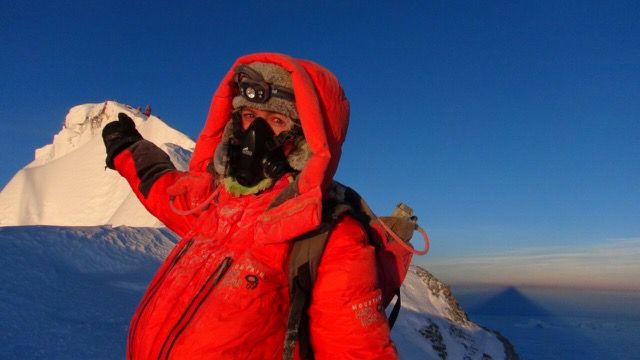
Finally, we were rescued by helicopter from this disastrous valley. At that moment, our initial expectation of reaching the summit was merely a slight memory. Flying back to Kathmandu, the capital of Nepal, we could see what it would mean to be in a war-torn country. Everything was destroyed. In the meantime, the image of a couple sitting in the ruins of their kitchen in what used to be their home, making fire out of their house’s destroyed wooden beams, and feeding us two small bowls of rice per day that they cooked on their stove, was stuck in our minds. We could not simply go back home to Switzerland. We decided to stay in Kathmandu and help support earthquake victims however we could. Forty-five days later, thanks to the numerous donations on account of our small charity organisation The Butterfly Help Project, we had distributed more than 31 tons of food supplies, rebuilt three provisional school buildings for more than 500 children and brought clothing to several remote villages. Everest was not a topic anymore. The Mountain was still there, of course, but going to these remote villages where the villagers had lost everything was another new and difficult challenge.
Find out more about The Butterfly Help Project
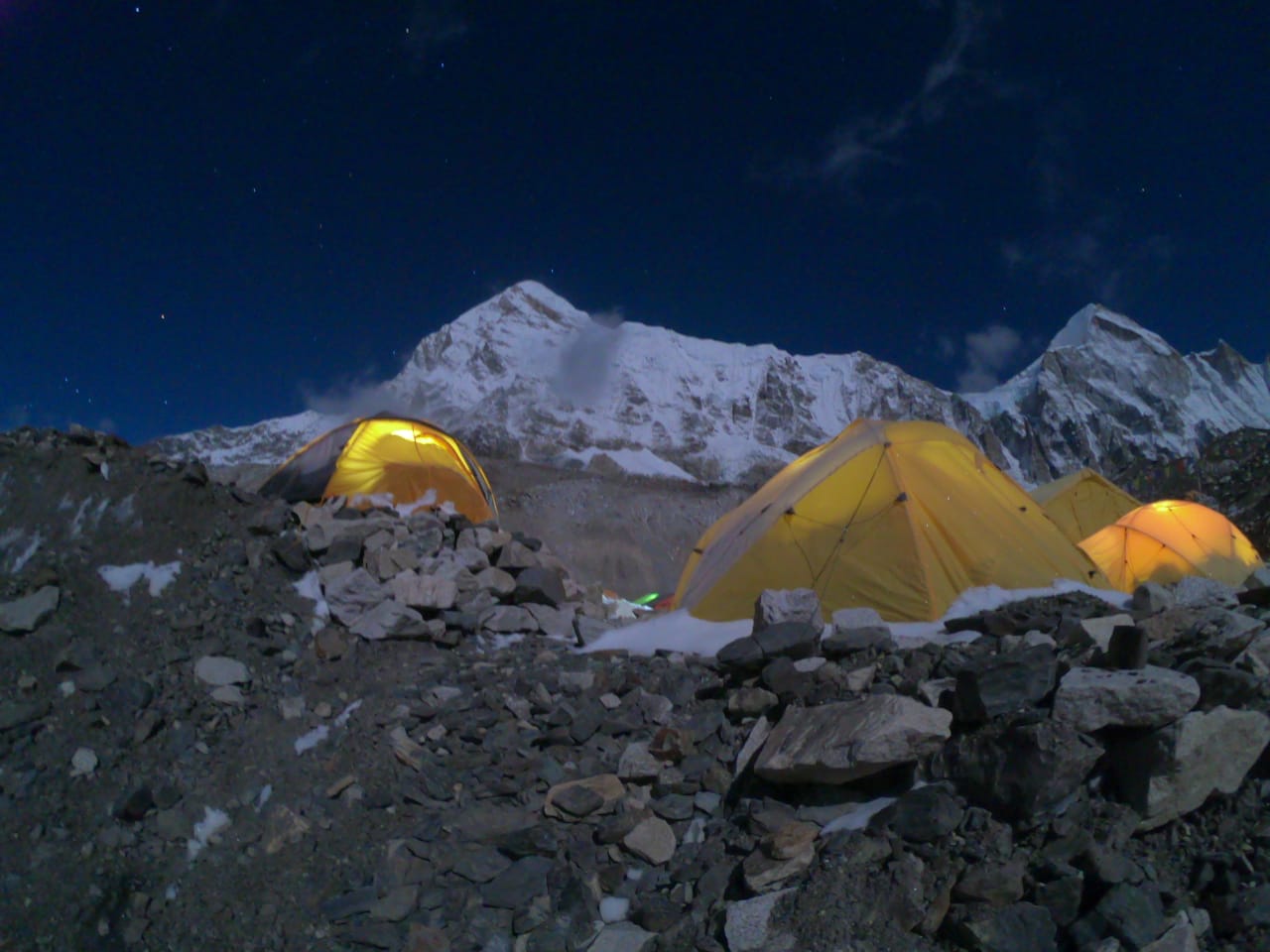
“I have to be here. This is my job”However, when something is in your heart, it is impossible to forget so easily. Everest. Simply to hear the word illuminates my eyes. Everest is known as the Goddess of Giving to the Sherpa climbing community. My husband is always so thankful for all that she has given them. Every year, the climbing Sherpas, who are part of the ethnic Sherpa people, put their lives in danger to bring us other climbers to the top of the World just to fulfill a personal and selfish dream. And every year, they go back to work, to risk it all again, because they have to support their families. Once one knows that the income from a two-month Everest expedition can support a family for almost one year, compared to the average Nepalese salary, there is no doubt. They have to go. Again and again. In 2015, shortly before our Tibetan expedition, we went to Everest Base Camp on the Nepali side for an acclimatization trip. It was one year after seracs on the western spur of Mount Everest had collapsed, resulting in an ice avalanche that killed sixteen climbing Sherpas on the Khumbu Icefall. They were carrying loads to Camp I & II. At Base Camp, we encountered one of our good Sherpa friends, Mingma Sherpa. He is married and has four children, the youngest of whom had just been born at that time. I asked him why he was there, after surviving what happened last year, when he had children and a wife waiting for him at home. Was he not scared? With a generous smile on his face, he simply answered “I have to be here. This is my job.”
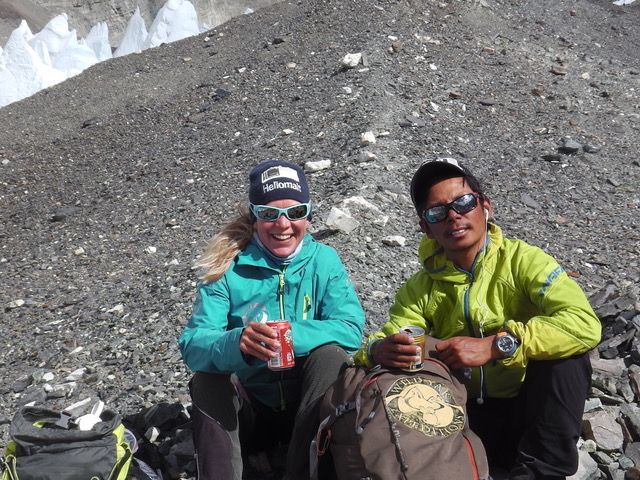
And that is how it is. The Sherpa families at home are consumed with worry. The Sherpa community sticks strongly together, encouraging one another. They know that it is one of the hardest jobs on earth. They are handling heavy loads in the scientifically speaking, famous “death zone” (above 7,500 meters (24,606 ft)) in order to survive the rest of the year. They cannot complain, otherwise they might not be hired for the job the next year. They have to be strong even if it hurts. The clients have paid, and so the Sherpas have to bring them to the top and back to Base Camp. At least, this is what has happened since the first expedition in history. But we have to keep in mind: it is thanks to them that we can experience such an amazing and great adventure! They are simply “the true heroes of Mount Everest!” As an Everest Summiteer, Sherpas cannot be thanked enough for their hard work, dedication, and humility.
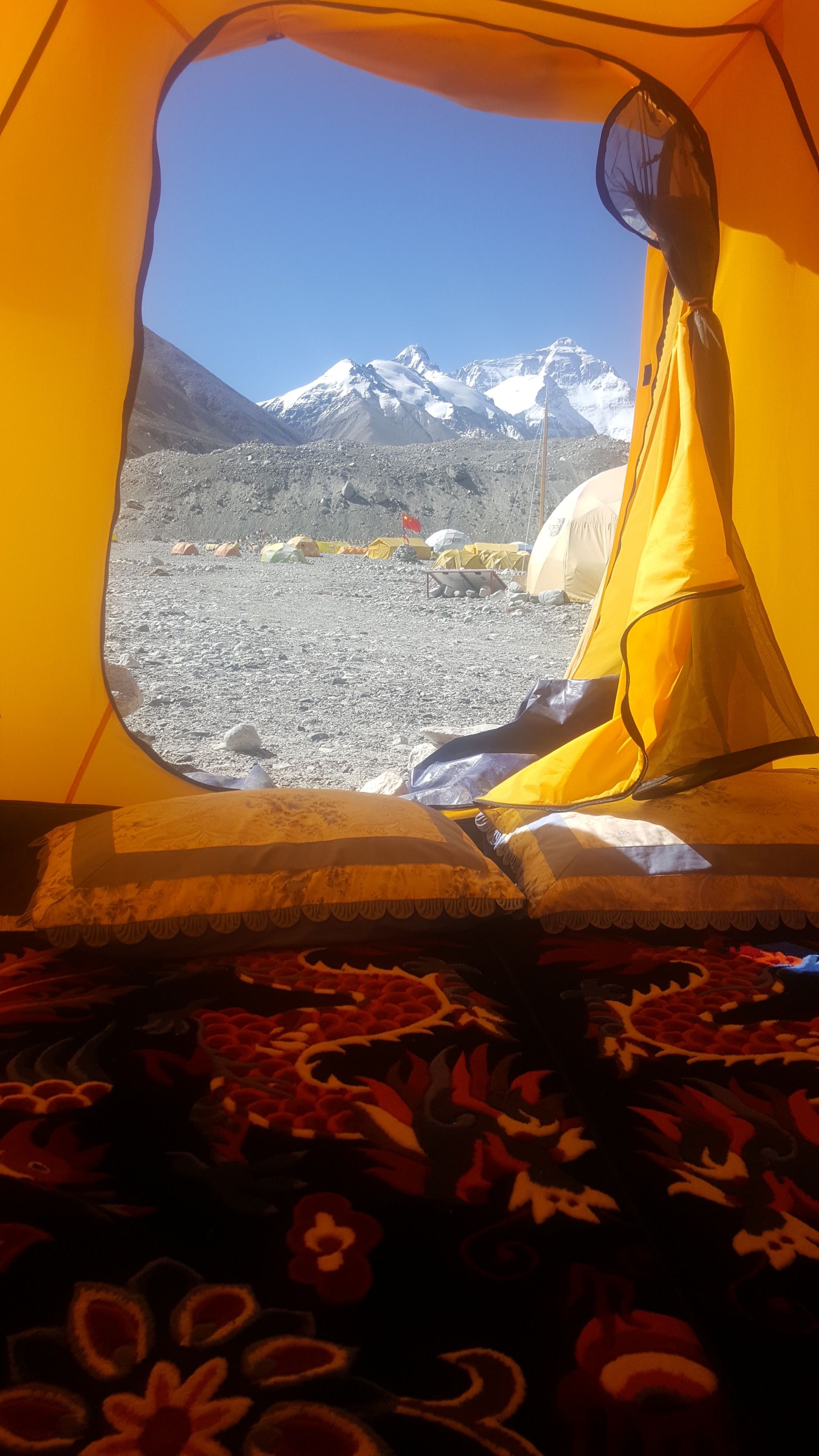
In 2016, when I had decided to listen to my heart again, my motivation had increased tenfold. I was already training the whole year, not only participating in ski mountaineering competitions but also ultra-trail races. For many years, I have competed at a high level and I would consider my fitness level to be good. But I knew from my previous expeditions at 8,000 meters (26,246 ft) that going for these kinds of altitudes is another story. You have to be in perfect shape, not only for yourself but because you depend mainly on others - the Sherpas. For several weeks, you must live in a zone where no human being can survive for long.

To climb Mount Everest, you must thus not only be completely fit, but you must have experience about how your metabolism reacts at such heights. You must be technically independent so that you can react quickly and without a doubt at some tricky passages. You must have good knowledge of how oxygen and mask regulators work. You should also be able to calculate your oxygen according to the hours it might take you for the climb. You cannot just say “I want to fulfil a dream to put on my resume, and anyway I am paying enough money for this challenge.” No! Indeed, we are speaking about a challenge. A Challenge with a capital “C”. A Challenge in the death zone, where every decision is either yes or no, live or die. There can be no hesitation. And the Sherpas are not employees. We talk about a team. A team that must work together in the highest zone of our planet.
When you are sitting at 7,000 meters (22,965 ft) in the dining tent of the climbing Sherpa Team, sharing a tea with them, getting inspired by their positive energy, it is just a fantastic feeling. For some, it was the first time on Everest, as it was for myself. For others, it is like attending the same race, year after year. There is a mixture of respect and excitement around being upon this mountain again. It is the home of the Goddess Chomolungma, no climbing Sherpa will start such an expedition without the traditional Puja - a Buddhist ceremony in which the Sherpa will thank the mountain for letting them pass and come back safely. However, it is also a way in which to apologise for the tracks made on her. To observe them, preparing the tea, setting up the tents, discussing the next days, was as if I was sitting in a tea-room somewhere in a mountain resort, they almost seem to be in communion with the mountain. Some are young, some are older. Whilst they all share the same aim, they also share the same pain. But no one shows it. Their movements are fluid and natural - You might almost forget that you are so high in the altitude... But what is the hard truth?
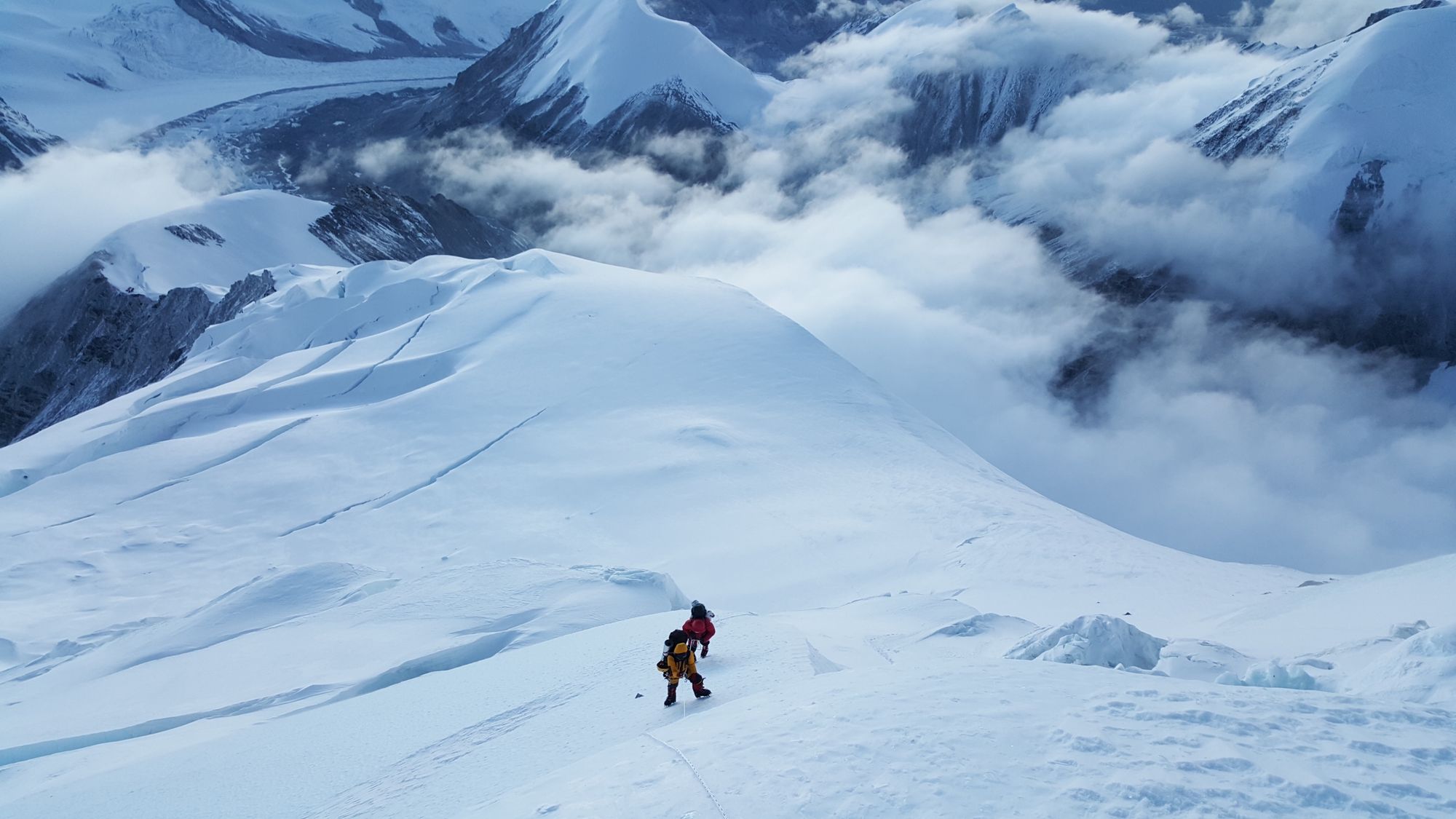
"The chance to fulfill my dream"Without discussing the numerous Sherpas who have lost their lives, dedicated to some unprepared and inexperienced clients, how many Sherpas have lost their jobs because of frostbite? Because of not having the financial resources to pay their medical care? Lost the use of or the entirety of their fingers, toes, etc.? Once back home, no one is taking care of them anymore.

I had the chance to fulfill my dream, with my husband by my side. I trained especially hard in order to ensure that we could achieve this goal. Not only to make it to the top, but to make it safely back to Base Camp, and to also recover properly after such an achievement. But one of my main thoughts, my top priorities while preparing for this adventure was not to endanger my husband, who has been on Everest expeditions more than 9 times, due to my lack of physical or technical preparation.
On May 21, 2016, we reached the summit with no overcrowded route (the infamous “traffic jams”), and we took no uncontrolled risks. It was simply a perfect combination of appropriate preparation and years of experience. How does this get achieved? My husband has been for more than a decade the “Sirdar” (i.e. the Head of the climbing Sherpas), leading large-scale expeditions on the highest summits on Earth. He himself has stood seven times on Mount Everest and more than 14 times on other 8,000 meter peaks. Based on his long-term knowledge and skill, he knew exactly which decision to make at which time. Along with his expertise, my fitness level, training, and mental preparation allowed me to experience the highest of the Himalaya summits with him, to see for myself the glorious sunrise on the Goddess Chomolungma, to achieve the holiest of Challenges.
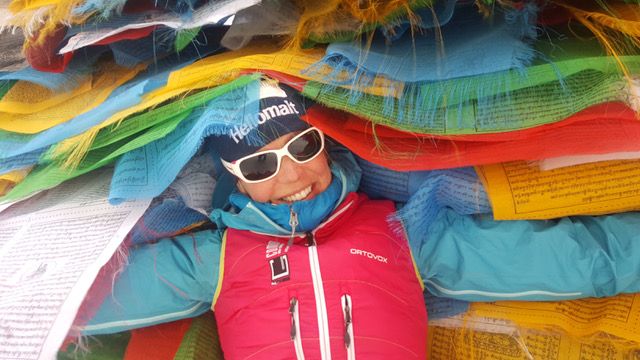
Andrea Sherpa-Zimmermann is a co-founder of the trekking and expedition agency Wild Yak Expeditions, and President of the non-governmental charity organization The Butterfly Help Project”.
2nd best newsletter in the universe